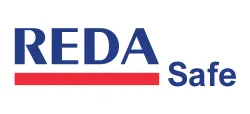Workplaces and Jobs That Demand Hydration Throughout the Year

Introduction
Staying hydrated is crucial, no matter your job or workplace location.
For many of us, keeping hydrated means having a bottle of water or a sports drink nearby and taking regular sips all day. Yet, in certain jobs and work environments, staying hydrated becomes a major challenge and a key factor for safety, and this isn't only an issue when it's hot outside.
If your work involves these types of environments or tasks, it's essential to have a strategy for hydration to ensure your body gets enough fluids.
Dealing with Dry Conditions
Dry and hot environments are a clear challenge when it comes to staying hydrated. As temperatures rise and the air becomes drier, the surroundings begin to draw moisture from your body. This means your sweat evaporates faster, and you lose more water through breathing while working.
The hotter it gets, the quicker you lose water, especially during physical labor. In these conditions, keeping (ideally) cool water within reach is crucial.
But it's not only the summer heat you have to worry about. Even in cooler seasons, dry air can lead to dehydration by pulling moisture away from your body. This happens because dry air naturally absorbs moisture from any available source, including you.
Therefore, it's important to keep up your water intake even when the temperature drops, as long as the air around you is dry.
Battling the Heat in Humid Conditions
Staying hydrated becomes a tough task in places with high humidity as well. In hot and sticky climates, you may feel excessively warm, but the reason is slightly different from just the heat.
Your body cools itself by sweating. Normally, as sweat evaporates off your skin, it lowers your temperature. However, in extremely humid conditions, sweat doesn't evaporate efficiently. At 100% humidity, sweat doesn't evaporate at all because the air is already saturated with moisture and can't absorb any more. This means your body's natural cooling system—sweat—doesn't work as it should.
In such humid environments, you may keep sweating without the benefit of cooling down, which only serves to dehydrate you more.
Hydration Needs in Oil, Gas, and Chemical Industries
Working at an oil rig or chemical plant comes with strict safety protocols, including wearing multiple layers of protective gear. This gear often includes fire-resistant coveralls, gloves, boots, hardhats, and safety glasses to protect against potentially flammable environments.
Wearing all this protective clothing can get extremely hot, especially on warm days. The situation is further intensified by the physically demanding nature of the work, which often involves climbing stairs, working near hot pipes and vessels. This combination significantly increases the risk of dehydration.
Ensuring you stay hydrated is crucial in these environments, where the protective gear and strenuous work conditions can quickly lead to overheating.
Staying Hydrated in Roofing Work
Roofing jobs present unique hydration challenges due to two main factors: the lack of shade and the heat emitted from roofing materials.
Roofers work directly under the sun, often on dark surfaces that absorb and then emit heat. This process transforms roofs into areas significantly hotter than the surrounding air, especially when using materials like roofing tar, which must be heated for application.
Additionally, roofers are conscious of the load they carry up to their work area, aiming to minimize it to reduce trips and avoid clutter and tripping hazards on the roof. Unfortunately, this often means leaving water bottles and electrolyte drinks behind in the truck, rather than keeping them within easy reach.
Hydration Challenges in Road Construction
Road construction might slow down in colder areas during winter, but in warmer climates, it's a year-round job. One of the biggest challenges for workers in this field is staying hydrated, especially given the heat generated by their work activities.
Workers laying asphalt deal with materials heated to over 550°F (300°C), creating a hot environment around the equipment where they operate. This, combined with the mandatory high-visibility safety gear worn on the job, leads to extremely hot working conditions.
Ensuring adequate hydration is crucial under these conditions to maintain health and safety on the job.
Hydration Needs in Foundry Work
A study from 2016 looking into heat stress in extreme workplaces revealed that iron foundries averaged a scorching 43.4ºC (110ºF) in ambient temperature. This intense heat, combined with the demanding physical labor required, creates a challenging environment for workers.
The necessity of wearing extensive personal protective equipment (PPE) near furnaces and molds, due to the risk of heat hazards, further escalates the risk of dehydration and heat stress in such high temperatures. Ensuring workers stay hydrated in these conditions is crucial for their safety and well-being.
Staying Hydrated While Welding
Welding involves dealing with intense heat from several fronts: heavy-duty personal protective equipment (PPE), various heat sources, tight workspaces, and the surrounding environmental heat.
Welders face some of the toughest working conditions, whether they're squeezed into a small space, hanging off the side of a building, or working underwater. Like roofers, welders need to be mindful of how much they carry, often making it hard to keep water close by. Opportunities for taking a break to drink water can be rare, requiring careful planning to avoid dehydration and heat stress.
Hydration in the Heat of Commercial Kitchens
The saying, "If you can't stand the heat, get out of the kitchen," applies to more than just the high-pressure environment chefs and cooks face; it's also about the literal heat in kitchens, which can be intense any time of the year. Those working in these conditions must adapt to the warmth.
While water is often within reach for those in kitchen roles, staying hydrated can easily be forgotten. Food trucks present a notable challenge: with limited cooling options like a small fan, infrequent breaks, and the heat from cooking equipment, the environment is particularly tough.
For chefs and cooks, especially when there's a constant queue of customers, it's crucial to actively find moments to drink water and maintain hydration levels.
Conclusion
In workplaces across various industries, the challenge of staying adequately hydrated is a common theme, yet it's one that can be overlooked in the hustle of daily tasks. From the scorching heat of foundries and the physical demands of construction sites to the sweltering conditions of commercial kitchens and the confined spaces of welding jobs, the need for a strategic approach to hydration is clear. Each environment, with its unique set of challenges, underscores the importance of recognizing and addressing the risk of dehydration, not just for the sake of productivity but for overall health and safety.
Adopting effective hydration strategies is crucial in these high-heat environments. Employers and employees alike must prioritize the availability of water and electrolyte-replenishing beverages, alongside regular breaks to consume them, even in the busiest of times. Awareness and proactive measures can make a significant difference in preventing heat stress and ensuring that workers in these demanding jobs can perform their roles safely and efficiently. It's not just about making it through the day; it's about sustaining a healthy and productive workforce in conditions that test the limits of endurance and resilience.
